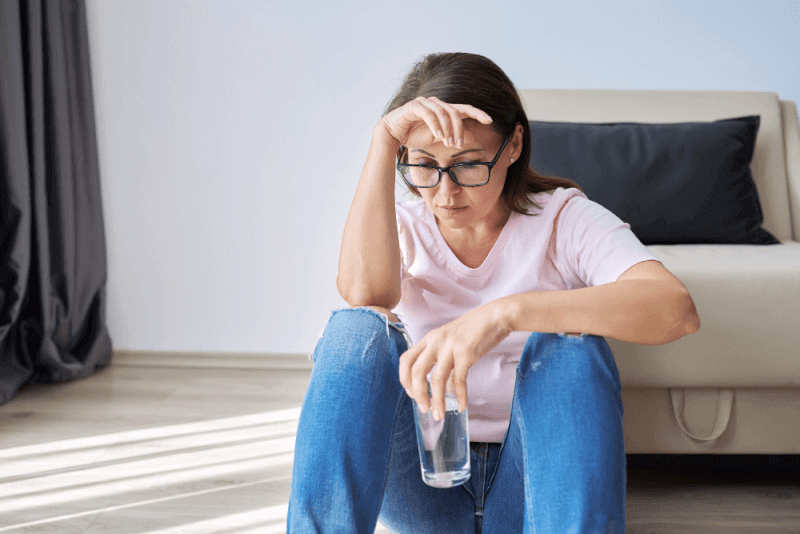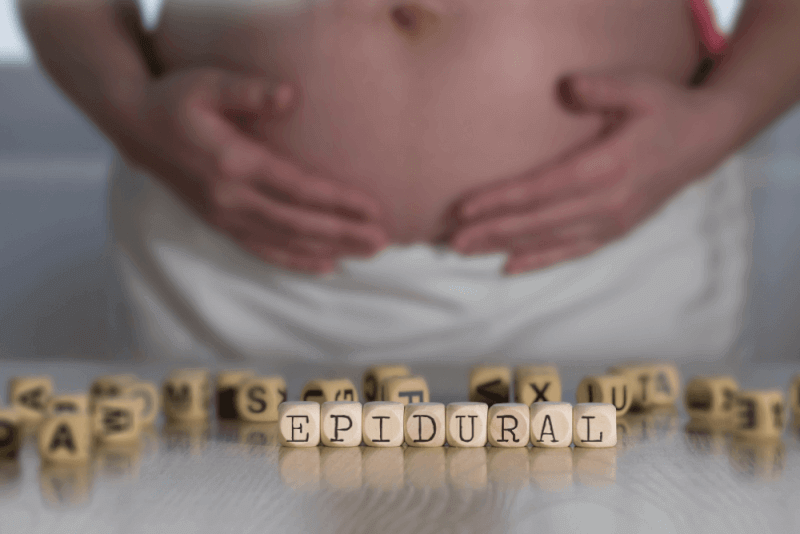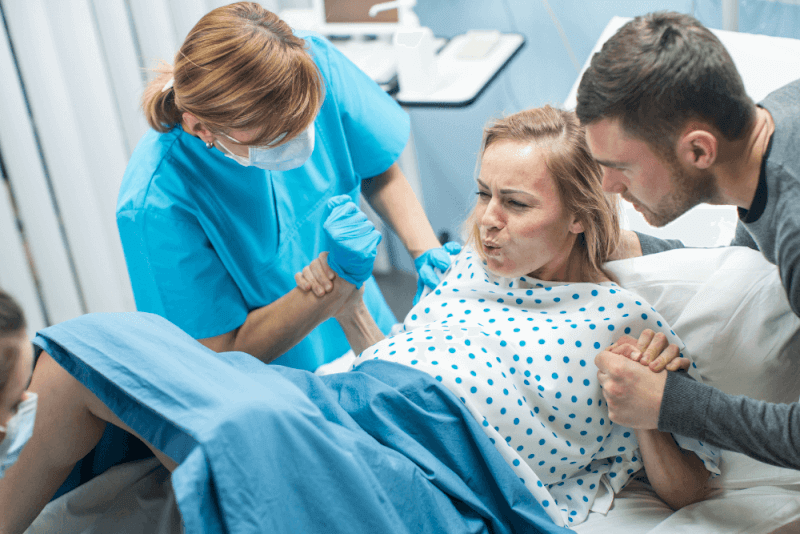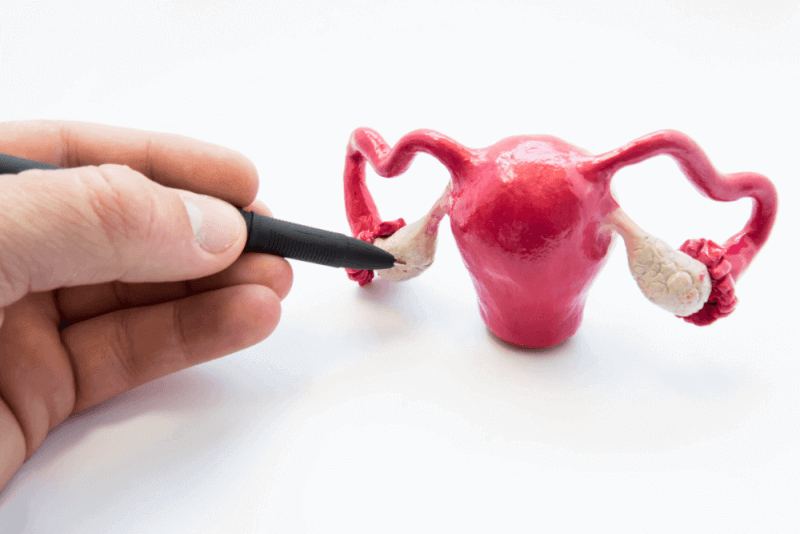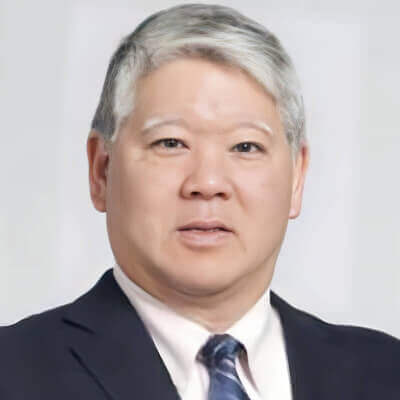30-Second Summary
- Early menopause refers to women entering menopause at a young age due to factors like ovarian insufficiency.
- Symptoms experienced during menopause may not be present in all women.
- Menopause is a gradual process that tends to occur in stages. It can begin between the ages of 40 and 60, with an average onset age of 51.
- Short hot flashes rarely last longer than a few minutes. They may occur occasionally or several times per hour.
What is Menopause?
Menopause is defined as the time when a person has not experienced menstrual bleeding for 12 months. It is a natural process caused by the ovaries stopping egg production and reducing estrogen production. Although it is typically seen after age 40, the average age is around 52. Menopause can also occur due to surgical or medical reasons. This condition is known as induced menopause. While menopause is a natural process, the physical changes it causes can affect a woman's quality of life, thus treatments to reduce symptom severity may be applied.
What is Pseudo-Menopause?
Although pseudo-menopause and early menopause are often confused, they are entirely different. Early menopause refers to women entering menopause at a young age due to reasons such as egg insufficiency, while pseudo-menopause is a practice used to treat certain women's diseases.
This method, applicable in the treatment of diseases such as adenomyosis, myoma, infertility, and endometriosis, involves administering various medications to patients. These medications suppress the ovulation function, temporarily halting the menstrual cycle. In short, pseudo-menopause is a treatment method deliberately carried out by gynecologists and obstetricians with the help of medications.
Symptoms of Pseudo-Menopause
In women who normally experience ovulation and thus have regular menstrual cycles, stopping these processes can cause certain side effects. The main one is the cessation of the menstrual cycle. Other potential symptoms that may appear in a woman with pseudo-menopause include:
- Chills
- Sleep problems
- Hot flashes
- Thinning hair
- Anger
- Slowing metabolism
- Weight gain
- Loss of breast fullness
- Night sweats
- Dry skin
- Sudden mood changes
- Sensitive disposition
Menopause Symptoms
Not all women may experience the symptoms of menopause, but the general symptoms that can be seen during this period are as follows:
- Irregular menstrual periods (bleeding can be heavier or lighter)
- Hot flashes
- Night sweats
- Chills
- Vaginal dryness that can cause discomfort during sexual intercourse
- Frequent urge to urinate
- Difficulty sleeping
- Drier skin
- Emotional changes
- Dry eyes
- Dry mouth
- Intensification of premenstrual syndrome
- Breast tenderness
While less common, the following symptoms may also be experienced by some individuals:
- Heart palpitations
- Headaches
- Joint and muscle pains
- Changes in libido
- Difficulty concentrating
- Generally temporary memory losses
- Weight gain
- Hair loss
- Thinning of the hair strands
The symptoms seen before and during menopause are due to changes in hormones. While some women may experience mild symptoms, others may experience them more severely.
Symptoms can begin up to 10 years before menopause actually starts and typically last about 7 years. A significant portion of women report that symptoms completely disappear or significantly decrease after the menopause period.
Menopause Diagnosis
The diagnosis of menopause is based on the absence of menstrual periods for 12 months in a woman around the age of 50. In this case, no preliminary examination is generally required.
In cases of doubt, a doctor may refer to tests. Treatment usually consists of prescribing hormones for 10 days each month over three consecutive months. Although often effective, this is not usually preferred due to the risk of side effects.
Menopause Treatment
Some women may not experience any symptoms, but most will have at least one or more. If this is the case, do not despair. Regular exercise can help reduce symptoms, and acupuncture and hypnotherapy are effective in managing hot flashes and insomnia.
In the past, HRT or hormone replacement therapy was the standard treatment. Later studies linked this type of treatment to the development of breast cancer, thrombosis, or stroke. However, the high efficacy of HRT has been proven for many women, and the benefits generally outweigh the risks depending on the situation. As a result, many doctors today are beginning to recommend short-term hormone therapy again for women in the first 10 years of menopause.
However, the risk is considered higher for older women. Therefore, the risk of developing breast cancer during menopause can be comparable to the risk of developing such a disease as a result of obesity and low physical activity.
As one woman explained, choosing the right solution can be difficult: "There are so many drugs and supplements - all with their own side effects - it can confuse and frustrate you." Therefore, it is worth discussing this with your doctor.
Since menopause can affect bladder control, you might consider carrying a few extra pairs of underwear in your bag in case your period suddenly starts again.
Hormone Replacement Therapy
Also called HRT, hormone replacement therapy is one of the treatment options for menopause symptoms. However, when applied after the age of 50, it is referred to as hormone therapy (HT). HTR is a term used particularly for treatments needed before the age of 40.
During treatment, the two terms can be used interchangeably, but there are slight differences between them. Primarily, HT involves the use of more hormones and can be prescribed for conditions like hormone therapy for cancer or certain hormonal imbalances, not just for menopausal women. Thus, HT is prescribed to those who are of natural menopausal age.
On the other hand, HRT is usually prescribed to individuals in their 30s and 40s who are not naturally producing hormones. The main difference between the two is that HRT carries different risks depending on age.
Types of Hormone Replacement Therapy
There are two main types of hormone replacement therapy, and combinations of these types can also be applied as treatment.
Estrogen Therapy
This is a type of HRT that involves the administration of synthetic estrogen only. Estrogen is usually prescribed in low doses at the beginning of treatment. There are several different forms of estrogen available, including:
- Pills
- Skin patches
- Gels applied to the skin
- Rings inserted into the vagina
- Creams applied to the vagina
- Tablets inserted into the vagina
- Sprays applied to the skin
Individuals who have had a hysterectomy are generally recommended estrogen-only therapy. The main reason is that taking estrogen alone carries less long-term risk compared to a combination of estrogen and progesterone.
Combination Therapy (EPT)
This treatment combines progesterone and estrogen. Progestin, which behaves like progesterone, including synthetic versions, is necessary for women with a uterus and is therefore prescribed.
Combination therapy is often applied as patches or bands to the skin, though intrauterine devices (IUDs) that release hormones are also used.
Methods of Administering HRT
HRT can be administered systemically or locally. Systemic hormone therapy involves the drug entering the bloodstream and being delivered to the tissues that need it. It is primarily used to alleviate symptoms caused by menopause.
Local hormone therapies are applied directly to a specific area. For example, creams applied to the vagina are recommended particularly for those experiencing vaginal dryness.
HRT can be administered continuously or cyclically. In continuous therapy, hormones are taken daily. In cyclic therapy, estrogen is used every day, but progesterone is used for 12-15 days each month.
Risks of Hormone Replacement Therapy
While HRT significantly improves the quality of life by reducing the severity of menopause symptoms, it also carries certain risks, including:
- Increased risk of uterine cancer if the uterus is still present and estrogen is used without progesterone
- Increased risk of heart disease if HRT is started 10 years after menopause has begun
- Blood clotting
- Stroke
- Increased risk of gallbladder disease
- Increased risk of breast cancer with long-term use
- Tests are often ineffective.
Phases of Menopause
If menopause does not occur due to medical or surgical intervention, it progresses as a gradual process.
Premenopause
The period when the ovaries start producing less estrogen is called the premenopause period. This period typically lasts about 8-10 years and usually begins in the 40s. One can be in the perimenopausal period for several years or just a few months. Many women begin to experience symptoms such as irregular menstrual bleeding, hot flashes, and mood changes during this stage.
Menopause
Menopause is the period when a woman has not had a menstrual period for 12 months. During this time, the ovaries do not release eggs and produce much less estrogen. Unlike other phases, menopause itself is a defined moment, hence one does not remain in this stage.
Postmenopause
The period after menopause is called postmenopause. Women remain in the postmenopausal phase for the rest of their lives. Symptoms typically seen during menopause generally diminish or disappear during this phase. Any continuing symptoms may persist for several years. Women in this stage are at risk for osteoporosis and heart disease due to low estrogen levels.
When Does Menopause Start?
Menopause is a process that develops gradually and tends to occur in stages. It can start between the ages of 40 and 60, with the average age being 51. The onset age is dependent on genetics, so you are likely to start menopause around the same age as your mother. Symptoms can begin months or even years before the "perimenopausal" period and can last up to four years after stopping.
Accepting the Onset of Menopause
Like menstruation, menopause is a completely natural process that needs to be accepted. There is no need to obsess over menstrual periods and PMS. For many women, this is a great relief. Consequently, menopause can be a source of liberation, entering a new phase of life where you feel at home in your body. A renowned doctor describes menopause as preferring the less common term 'second spring' because for women, this is a time of new development."
Still, you may find it challenging to navigate emotionally and physically. However, knowing what to expect can help you better understand and accept this phase of your life.
Menopausal Age
The age of menopause varies according to geography. Factors such as climate, diet, stress levels, and physical activity greatly influence the age of menopause. According to the World Health Organization, the menopausal age worldwide varies between 45 and 55 years.
In some regions, due to changing factors, this limit may be under 45, while in others it may be over 55. Another reason for this variability is the extent to which modern health services are accessible.
For women who can easily access modern health services, obtaining treatments for women's diseases and other health services is much easier, which facilitates smooth progression of the ovulation cycles and allows women to have menstrual cycles for a longer duration.
Some Common Symptoms
Menopause is often accompanied by climacteric disorders, which are symptoms associated with the cessation of ovarian function and hormonal changes. The intensity of these symptoms varies from woman to woman and is linked to hormonal deficiencies in estrogen. They are not systematic, and some women may not experience them at all.
These climacteric disorders include:
- Hot flashes or vasomotor symptoms (found in seven out of ten women).
These events result in:
- Inconsistent feelings of shivering, weakness, and dizziness,
- A sudden intense sensation of heat rising from the body to the face and neck, accompanied by flushing,
- Heart palpitations, excessive sweating, and shivering before returning to normal.
Hot flashes rarely last more than a few minutes. They can occur occasionally or several times an hour.
They typically occur at night, disrupting sleep, and can also manifest during the day: they then normalize later affected by ambient temperature, eating, alcohol, exercise, and emotional states. They can last for a few months to several years.
- Isolated night sweats without hot flashes;
- Vulvovaginal dryness;
- Urinary disorders: more frequent urinary irritations or infections, urinary incontinence, frequent urge to urinate;
- Headaches, fatigue, insomnia, irritability, anxiety;
- Joint pain, widespread and variable, more pronounced in the morning and decreasing after morning stiffness.
Some climacteric disorders like hot flashes, sweating, and fatigue can be temporary, but sometimes continue during menopause. Others, such as vaginal dryness and urinary discomforts, are long-term.
How is the Onset of Menopause Explained?
At birth, every girl is born with a limited supply of ovarian follicles. From puberty to menopause, known as the period of "genital activity," each woman has menstrual cycles during which fertilization is possible.
The menstrual cycle is divided into two distinct phases. The follicular phase prepares for ovulation. During this phase, follicle-stimulating hormone (FSH) is produced. The pituitary gland stimulates the ovarian follicles to produce a mature egg. It also promotes the secretion of estrogen, which affects the thickening of the endometrium.
Ovulation occurs under the influence of estrogen, driven by a surge in luteinizing hormone (LH peak), which causes the follicle to rupture and release a mature egg.
The luteal phase is the period between ovulation and the start of menstruation. After ovulation, the follicle that transforms into the corpus luteum produces progesterone, which helps strengthen the lining of the uterus.
If the egg is not fertilized, the corpus luteum atrophies and the level of progesterone sharply declines, in the context of low estrogen production. Consequently, the surface layer of the uterus lining is shed, marking the start of the next cycle.
This cycle sequence continues until the end of the follicle reserve. When there are no more ovarian follicles and therefore no ovulation, the hormonal production of progesterone and then estrogen decreases and stops. The onset of menopause is the result of the decline in progesterone production. Menopause begins when the hormonal production of estrogens stops.
Early Menopause
When it occurs before the age of 40, it is referred to as early menopause. This can be spontaneous (due to genetic reasons) or can result from treatments such as:
- surgery,
- chemotherapy,
- radiation therapy.
In such cases, hormone replacement therapy is prescribed until the age of 50 to prevent complications, unless contraindicated.
Symptoms of Early Menopause
The symptoms of early menopause, often caused by health issues, are similar to those of menopause. Symptoms seen in women experiencing early menopause include:
- Headaches
- Dizziness
- Increased appetite
- Memory lapses
- Decreased concentration
- Mood swings towards anxiety or irritability
- Insomnia
- Fatigue
- Weakening bladder control
- Vaginal dryness
- Vaginal itching
- Lack of sexual desire
- Longer or shorter intervals between periods
- Periods lasting longer than a week
Causes of Early Menopause
The factors that may contribute to early menopause have not been precisely identified. However, the following factors are thought to predispose to early menopause:
- Never having been pregnant
- Smoking
- Low socio-economic status
- Genetic factors
- Autoimmune diseases
Diagnosis of Early Menopause
To diagnose early menopause, it is necessary to observe changes in the body. If a woman experiences irregular menstrual cycles before the age of 40, it is advisable to consult a gynecologist.
These consultations typically involve physical exams as well as blood tests to check thyroid function and pregnancy status. Measuring estrogen levels also provides information about the condition of the ovaries.
Treatment of Early Menopause
There is currently no cure for early menopause. However, some measures can be taken as soon as symptoms appear. Hormone supplementation may be administered if menopause has not yet started and the individual's overall health is stable. Additionally, establishing a regular lifestyle and quitting smoking can also assist in managing symptoms.
What Are Menstrual Periods Like Entering Menopause?
During the premenopausal phase, as hormones begin to change, irregularities in menstrual bleeding start to occur. Even in cycles that were once very regular, extensions can be seen. Bleeding can be very light one month and severe the next. There may be periods with no bleeding at all, which can last several months.
Menopause and Sexuality
Following menopause, the loss of estrogen and testosterone can lead to changes in a woman's body and sexual drive. Women may find they are less easily aroused during and after menopause. Consequently, they may be less sensitive to touching and caressing, leading to a decrease in sexual interest.
Additionally, the low level of estrogen decreases blood flow to the vagina, which can reduce vaginal lubrication and sensation. This can cause difficulties during sexual intercourse due to vaginal dryness.
Other factors can also affect women's attitudes towards sexual intercourse during menopause, including:
- Bladder control issues
- Sleep disorders
- Depression
- Anxiety
- Medications
- Health concerns
However, not all women experience a decline in sexual activity. About 27% of women aged 70 continue to be sexually active. Some women may even see an increase in libido after menopause, primarily because the risk of pregnancy is eliminated. Also, having fewer childcare responsibilities at this stage in life can allow for closer intimacy with their partners.
Improving Sexual Health During Menopause
Steps to enhance sexual health during the premenopausal and postmenopausal periods include:
- Physical activity can boost energy levels and improve mood and body image, helping to increase interest in sexual activity.
- Quitting smoking can enhance blood flow to the vagina and also prevent the decrease in estrogen levels.
- Avoiding drugs and alcohol is crucial.
- Engaging in more frequent sexual intercourse can increase blood flow to the vagina, keeping the tissues healthier.
- Taking time during sexual activity to become aroused can help maintain vaginal moisture, which protects the tissues and makes sex more comfortable.
- Performing pelvic floor exercises can strengthen the muscles involved in orgasm.
- Avoiding bubble baths and other products that can irritate the vagina is recommended.
- If experiencing a decrease in libido, consult with a doctor about products that can enhance sexual desire.
Individuals with vaginal dryness can use water-based lubricants. For severe vaginal dryness, prescription vaginal estrogen creams may be beneficial.
Nutrition During Menopause
Starting from the premenopausal phase, women should consider making changes to their diet to help alleviate symptoms and reduce health risks associated with menopause. In some cases, dietary changes alone may not be sufficient, and supplements recommended by a doctor may be necessary.
Foods to Avoid
During menopause, the foods you remove from your diet are as important as those you add. It’s essential to pay attention to your body’s needs and identify foods that may exacerbate symptoms. After recognizing these foods, they should be avoided. Here are some common types of foods that may need to be limited or avoided during menopause:
Spicy Foods
Spicy foods, especially hot peppers and sauces, can trigger hot flashes, one of the most common menopause symptoms. Given that spiciness raises body temperature, it can worsen symptoms. Herbs like thyme and basil can be used as alternatives to spicy seasonings.
Caffeine and Alcohol
Caffeine is often responsible for some hot flashes during menopause. Therefore, while not necessarily eliminating it entirely, reducing its intake is recommended. The same goes for alcohol; if it triggers hot flashes, night sweats, sleep issues, or weight gain, it should be minimized.
Carbohydrates
Carbohydrates are often responsible for weight gain during menopause. Hormonal changes slow down the metabolism, making it harder for the body to process carbohydrates compared to other nutrients. Therefore, foods like pasta, white bread, potatoes, and rice should be limited. Processed foods should also be avoided.
Foods to Include in Your Diet
Certain foods can be beneficial to include in your diet during menopause, as they can help manage symptoms in various ways.
Calcium-Rich Foods
Along with managing hot flashes and night sweats, bone health also changes during menopause. Though the effects may not be immediately apparent, bone loss and osteoporosis are common during this time. Calcium-rich foods help keep bones strong and healthy.
Foods rich in calcium include:
- Fat-free milk
- Cow’s milk
- Soy milk
- Yogurt
- Low-fat cheese
To maintain a healthy calcium level, it’s recommended to consume around 1200–1500 mg of calcium daily. If dairy products are not consumed frequently, foods like oatmeal, orange juice concentrate, leafy green vegetables, and tofu can be added to the diet.
Vegetables
Consuming leafy green vegetables during menopause can help with weight management and prevent bone loss. These include collard greens, spinach, and turnips.
Other vegetables that may reduce the severity of hot flashes include:
- Broccoli
- Cauliflower
- Asparagus
- Brussels sprouts
Lean Proteins
Consuming lean protein sources can help minimize menopause symptoms and aid in weight management. These proteins also help maintain bone and muscle mass. Sources of lean protein include:
- Grilled chicken
- Tuna
- Turkey
- Lean beef
- Tofu
- Lentils
- Beans
Soy Products
Some soy-based products can help alleviate symptoms like hot flashes and night sweats due to their estrogen-like content.
Foods Containing Phytoestrogens
Phytoestrogens, naturally occurring in some foods, are less concentrated than in supplements. Foods rich in phytoestrogens include:
- Peanuts
- Sesame seeds
- Flaxseeds
- Chickpeas
- Fruits
- Barley
- Apricots
- Green tea
- Black tea
Supplements
It’s not always possible to address menopausal symptoms through diet alone. In such cases, supplements recommended by a doctor may be beneficial. Recommended supplements during menopause include:
Magnesium
Insomnia, seen in some menopausal women, may be due to magnesium deficiency. Magnesium supplements can help, though research on their effects is limited.
Foods that are high in magnesium include:
- Whole grains
- Spinach
- Pumpkin seeds
- Almonds
- Beans
Phytoestrogens
Since phytoestrogens act similarly to estrogen, they may be used as a supplement during menopause. Phytoestrogens are found in several herbal supplements, including:
- St. John’s Wort
- Black cohosh
- Genistein
- Red clover
- Soy
Red clover and soy, which contain isoflavones, may reduce hot flashes. However, those with breast cancer should avoid red clover. Phytoestrogens may also interact with medications for epilepsy, asthma, and other conditions.
Calcium
Those unable to consume sufficient calcium through diet may consider calcium supplements. The intestines can absorb up to 500 mg of calcium at a time, so larger doses should be split.
Vitamin D
While calcium intake is essential, vitamin D is needed to ensure calcium is absorbed by the bones. Those with limited sun exposure are advised to take daily vitamin D.
Wild Yam
Wild yam extract or tincture is suggested as a natural option for managing menopausal symptoms. However, studies indicate it may have limited efficacy.


